Uh, Nemrod, you know that the phoenix nozzle was invented as a way to modernize the aqua-lung right? You got yours through Vintage Double Hose? That's where I got the parts for the DW Stream Air I dive on occasion. No Phoenix, I have a J valve and a wrist mounted depth gauge. The system your diving is a mashup of the old beauty and the new safety.
Uh, the Phoenix is a first stage only. Yes, I have a Phoenix conversion, number JAMES-006. Is there a point to the question? It does not modernize anything other than adding a LP and HP source. The first stage components remain the same and as you know, the Conshelf, Titan and Legend all share the same basic first stage as the original Royal Aqua Master. And, we were able to utilize the hookah port for low pressure and a banjo bolt for high pressure or attach the spg to the tank port long before there was a Phoenix.
the Aqua-Lung first came out they were primitive as all get out. You had to check your air and calculate how much time you could be down and then stick to a profile. you had to buddy breathe by shoving the mouthpiece at your buddy and hope he didn't panic, which he often did. When you ran out of air you activated your J valve and swam up, assuming that a stray bump didn't activate it during the dive sometime. Maybe you wore a Mae West for buoyancy, maybe you just swam down and swam back up again. Or you weighted yourself to be negative and were could tell your tank got low because you were floating instead of sinking.
I was taught and was open water certified between 1966 and 1968 using double hose regulators and have owned a Mistral from that time, the one I certified on, still have it, still dive it. I disagree with your primitive statement as it is really incorrect, different but not primitive. I am fully cognizant of the days when we (including me) relied on time and depth and SAC rates to estimate bottom time, planning our dives and timing them and using a J valve reserve. Why, is that supposed to be difficult? Mae West?, No, I did not have anything but sometimes we used thee USD/Voit CO2 floats or vests. There were no BCs in use or even existence perhaps save for the Fenzy type units. So, yes, I swam down, swam around and then swam back up and we also, swam out there and swam back more often than not. And we probably had to hike uphill ten miles to get there. Why, is that supposed to be difficult?
first and second stage rigs make diving a lot safer hands down. Now, do they force the diver to be more in tune with his environment, becoming Cousteau's "manfish"? I don't think so. that's why I enjoy diving my double hose, it keeps me on my toes. Plus I enjoy explaining what it is to divers who stare at me.
Again, we can agree to disagree as I do not agree with your safety concern. If you can point to any statistics showing that double hose regulators are less reliable or more dangerous I will be glad to entertain a change of mind. And if you are going to quote me, let's add that safety IS overrated and in fact is a fabrication of the modern mind.
, is the Octo bungied around your neck? Why is that?
Uh, yes it is, that is my octopus for sharing air. It is on a slip knot. Surprisingly, apparently, many do not understand that there have been necklaced second stages since the advent of the single hose regulator. A slip knot releases the regulator just as cleanly as any store bought octo holder and a necklaced second stage keeps it cleanly tucked away just as it did in 1968.
Of course, when I am solo, I do not carry a regulator for sharing air, if I feel I need redundancy then I was full redundancy and go to dual regulators or a pony or some other fully independent system.
N
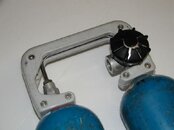
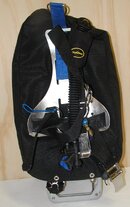
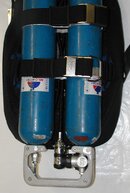
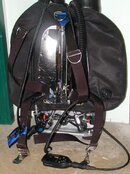
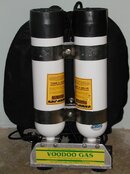
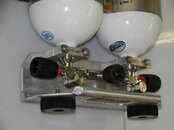
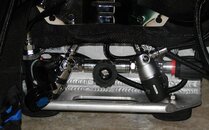
 Photo by Chuck Davis
Photo by Chuck Davis






 Photo by Chuck Davis
Photo by Chuck Davis



